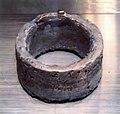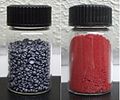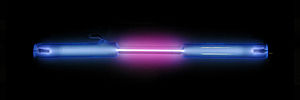Niobium is a chemical element; it has symbol Nb (formerly columbium, Cb) and atomic number 41. It is a light grey, crystalline, and ductile transition...
85 KB (8,427 words) - 15:55, 11 November 2024
Plutonium (section Isotopes and nucleosynthesis)
to power some spacecraft. Plutonium isotopes are expensive and inconvenient to separate, so particular isotopes are usually manufactured in specialized...
139 KB (14,981 words) - 08:15, 9 November 2024
Chang Corporation. Although niobium–titanium boasts less-impressive superconducting properties than those of niobium–tin, niobium–titanium has, nevertheless...
72 KB (7,871 words) - 08:13, 21 October 2024
call these elements with complete chemical identity "isotopes". The problem of placing isotopes in the periodic table had arisen beginning in 1900 when...
92 KB (11,059 words) - 09:37, 11 November 2024


























